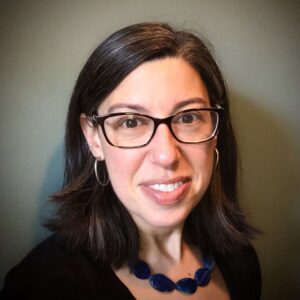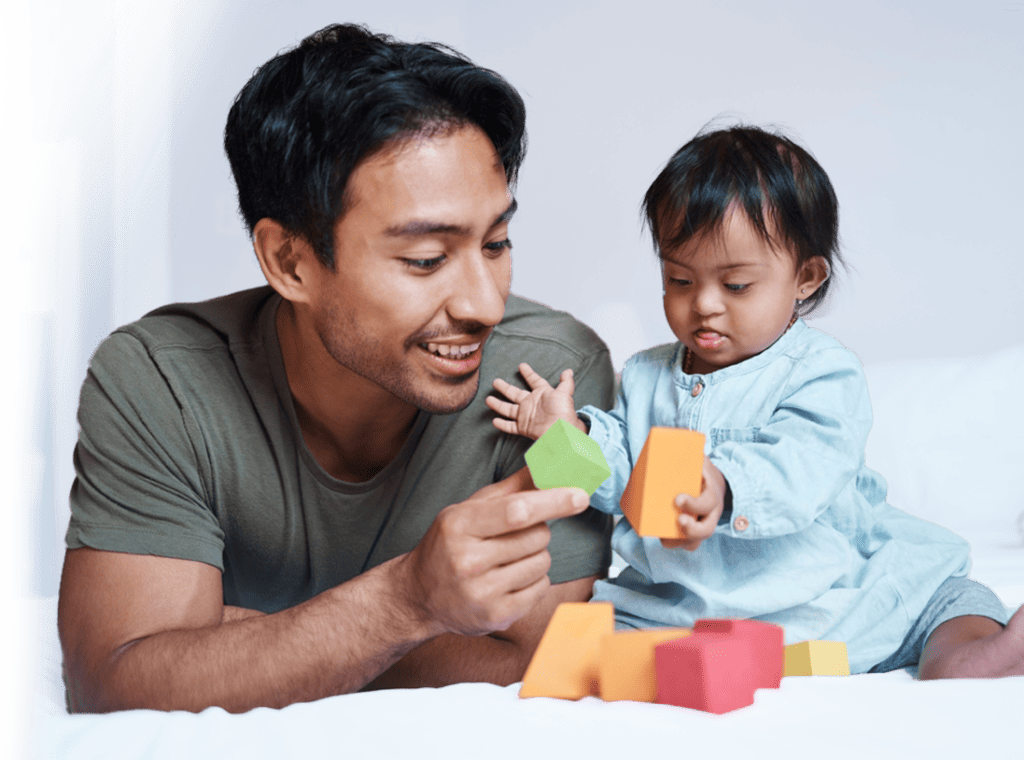“[What I want is to know is] that there are people around [my daughter] who know her, who have some level of understanding of her, and who are positioned to help her live her best life. Not to care for her, not to protect her, not to record-keep her, but to… support her to live her best life.”
Earlier this spring, our friend Raymond Jetson of Metromorphosis led a webinar about how to build a village of support for our children with disabilities. He told us about the work his family has done to build community for his daughter, J’Erica Nicole Jetson, who is now 31 and who was born with developmental disabilities.
Mr. Raymond laid out three steps for those of us who love children (or adults!) with disabilities.
-
Build people
The first step to build this community for your child is to build people.
Your child’s people are the ones who have the knowledge, understanding, and skills to support your child exactly as they are. We can’t expect everyone to understand our children right off the bat, but we can teach people what we need them to know. We can find new people who already “get it.” And, for those who can’t or won’t get on board, we can ask ourselves whether they really should be our child’s people.
Mr. Raymond told us about Ms. J’Erica’s tendency to wander away. He asked “… Should the neighbors be aware [of who she is and know that she sometimes wanders] if, in some rare set of circumstances, my lovely daughter were to … show up in their yard? How should they approach J’Erica?”
Imagine a scenario where your neighbors watch a stranger come into their front yard, and the stranger can’t communicate where she lives or why she’s there. Maybe someone calls the police to try to resolve things. Now everyone involved is upset and scared.
What does it look like to build people in this scenario? Here’s a possibility:
The family makes a point of introducing themselves to all the neighbors. They give the neighbors their phone numbers and let them know that Ms. J’Erica sometimes walks away from home. They talk about how to communicate well with her.
The next time Ms. J’Erica wanders away from home, a friendly neighbor greets her by name. That neighbor gives her parents a call to tell them she is safe. Ms. J’Erica is welcomed and offered some lemonade while she waits for her parents to come pick her up. No one panics because building people transformed this situation into just a hiccup.
We can also build people by seeking out people who would enjoy spending time with our children. Peers in an adult day program. Friends from an adaptive swim team or Miracle League Soccer Team. The college student staffing your child’s after-school program.
I asked friends and colleagues to tell me what it looks like when they’ve built people for their child. Here are a few of the things I heard:
-
“My sister never panics when my kid is having a meltdown. She just calmly waits it out nearby.”
-
“That group of kids always includes him in the conversation, even though he doesn’t speak.”
-
“When they talk with him, they wait patiently for him to process and respond. If they don’t understand what he says, they keep trying.”
-
“They don’t police her brusque tone. They just really listen to what she is telling them.”
-
“My dad never struggles with my kid about food because he knows it makes him anxious.”
-
“When we celebrate holidays together, she always asks how she can make sure my daughter is fully included.”
Think about some of the things you’ve learned since you found out your child had a disability. How will you share what you’ve learned to build the people who understand and support your child?
This is where I remind you to involve your child whenever possible – this is their information you are sharing and your child’s consent matters.
2. Build places
Mr. Raymond challenged us: “How do you pay attention to the spaces that your family member will frequent or should frequent? And what are the things that you need to do so that those spaces are equipped to receive?”
With a lot of work and a lot of time, we have identified places that accommodate the needs of my children, and then we help the people in these places get to know who our kids are.
My daughter’s dance program knows that when they see her name on the registration list they need to line up American Sign Language interpreters for her classes. Her Girl Scout troop did the same thing (fun fact: did you know that Girl Scouts founder Juliette Low was deaf?)
When she went to a new summer camp, we asked if we could meet with the staff beforehand to talk about how to communicate through an interpreter. My daughter felt shy and asked me to do the presentation, then took over almost before I finished introducing myself. The counselors were excited to learn how to work with an interpreter and charmed by my kid. They didn’t miss a beat when camp started, and she had a great time.
Here is what this might look for you and your child:
-
The local librarians know that your child may not follow the “Quiet, please” signs – and they are not bothered.
-
The pediatrician’s office knows your child gets anxious on the exam table and so they do the exam while she sits in a chair.
-
No one in your congregation bats an eyelash when your child puts on noise-canceling headphones during the singing.
None of this happens without a lot of trial and error. And there are some places that won’t ever shift in ways that will really make our children truly welcome. It hurts when that happens. But when I’ve managed to make this happen for my kids – or better yet, watch them advocate for themselves as they’ve gotten older – it’s magic.
3. Build presence
Mr. Raymond asked: “How does the world around you … have an awareness of the person that is your family member, not ‘this individual with disabilities’?”
One idea of his: create a one-pager that talks a little about your child. This is another place where your child should participate if at all possible, because this is information about them. Depending on who you share this with, you may want to include things like:
-
What your child loves to do
-
How your child communicates
-
What helps your child feel calm or stay grounded
-
What activities or aspects of their environment bring them joy or stress them out
-
What skills they have that may not be obvious
-
How your child shows distress, anxiety, or pain
-
What behaviors they may display (like rocking in their seat or separating their food onto different plates) that might be surprising or worrying to others but are just who your child is
And we show up with our children in our community. We go to religious celebrations, the grocery store, community festivals, and Parent-Teacher Association meetings. We participate and we insist on accessibility.
We post about our kids (with their permission!) on social media. Maybe we talk about their disability but we also talk about their obsession with Minecraft or the new job they just started or their upcoming dance performance.
We seek out their disabled peers and we support their friendships. We find their typically developing peers and we support those friendships too. We find groups of other families who share some of our joys and challenges. We look for adult role models with similar disabilities.
We find adaptive programs so our children can swim or sing or go to camp. We find mainstream programs that make accommodations so they can swim or sing or go to camp.
We teach people to see our children the way we do – as the whole, wonderful humans they are. And we keep building their community for them and with them.
Isn’t that exactly what we want for all of our children?
Watch the video or read the transcript of Mr. Raymond’s webinar.




